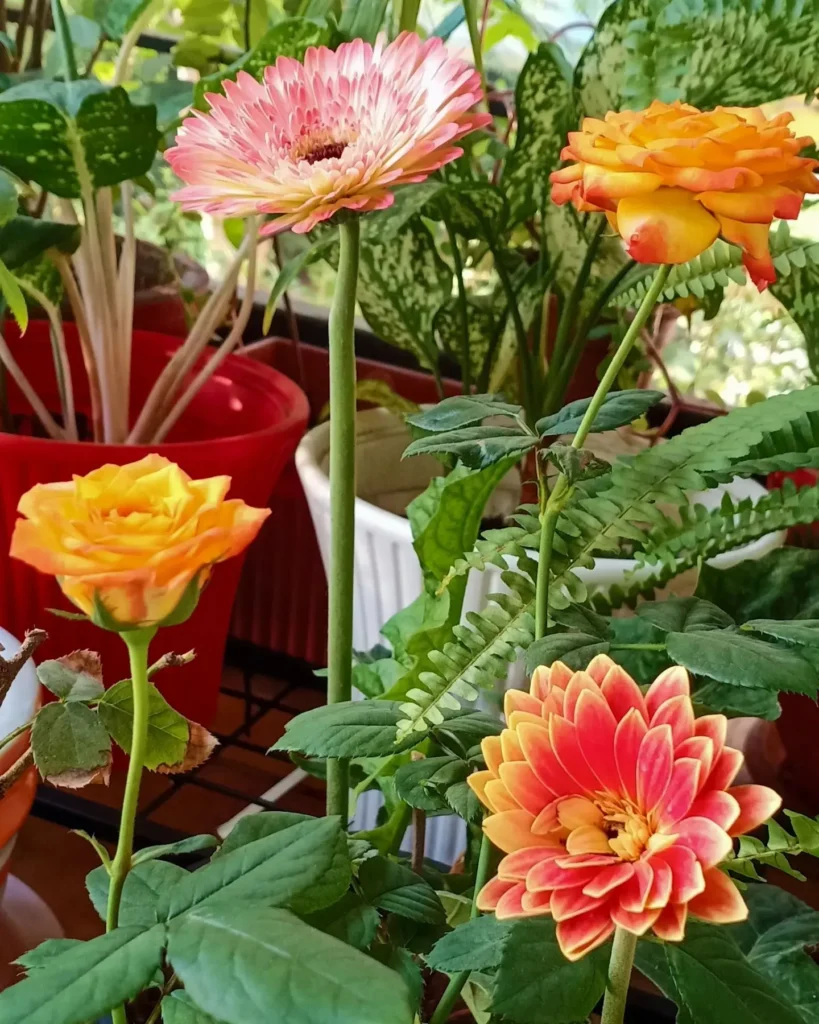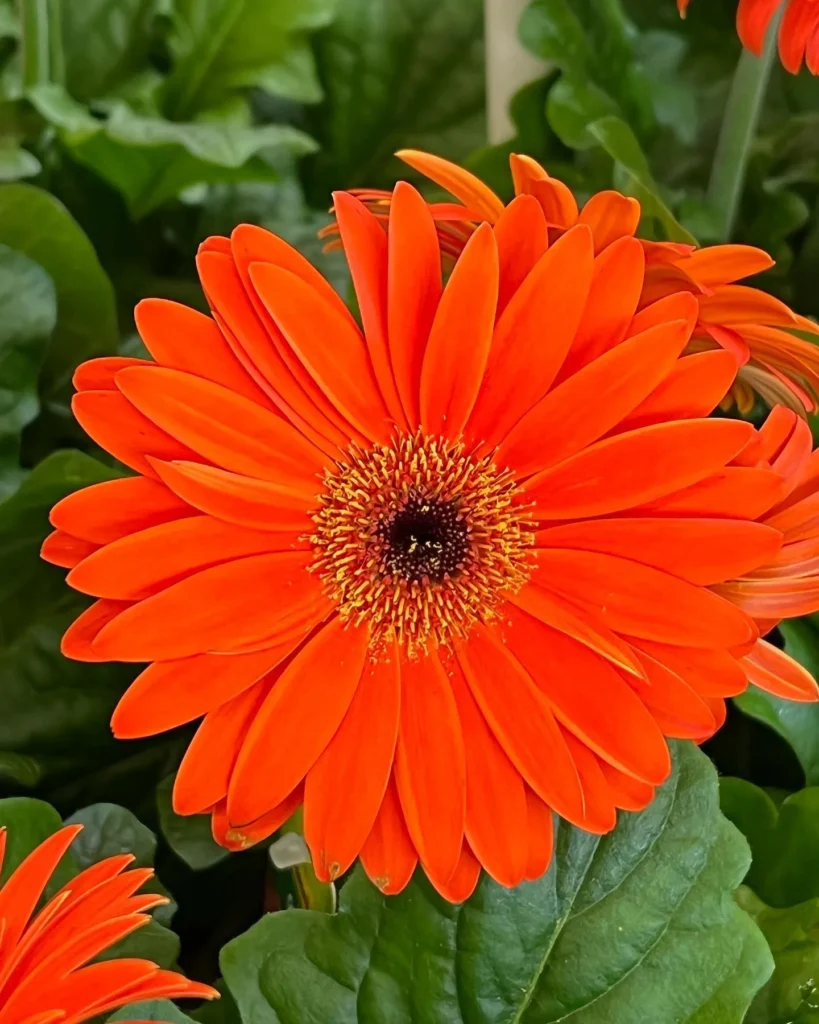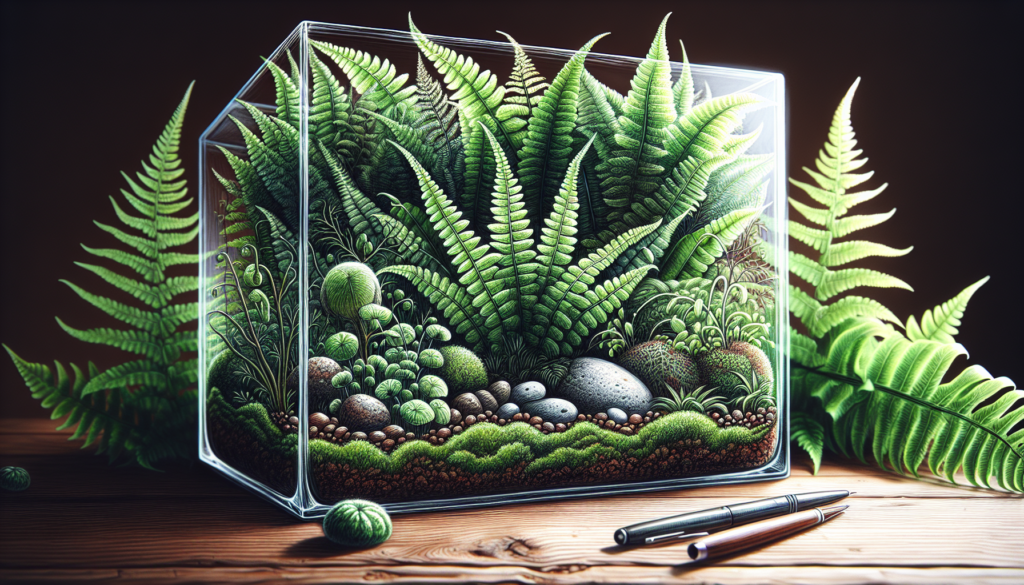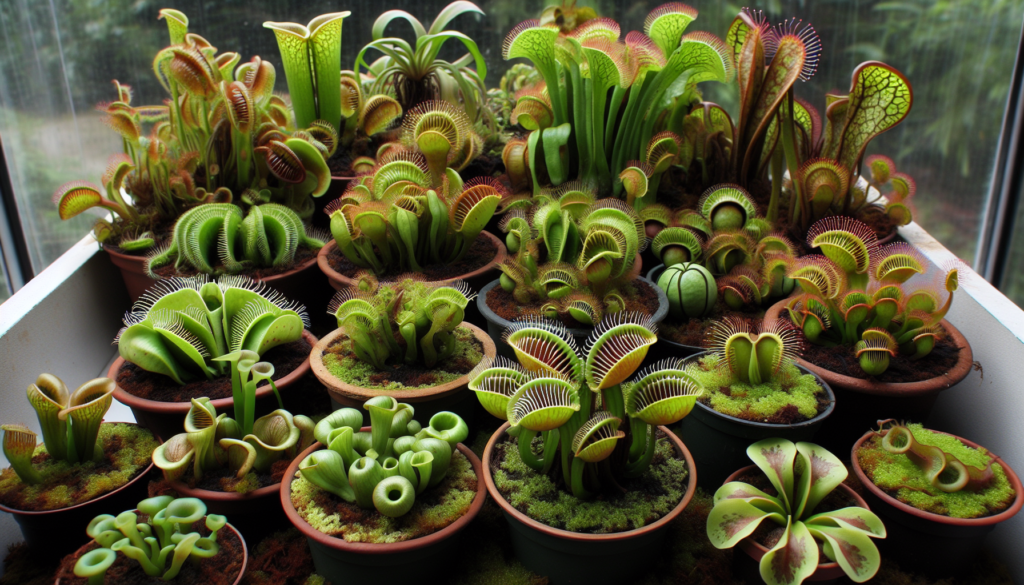Water Gerbera Daisies thoroughly when the top inch of soil feels dry to the touch, ensuring deep, infrequent watering to promote lush blooms and healthy growth.
In this comprehensive watering guide, I will share my top tips for maintaining lush and vibrant Gerbera Daisies. Discover the key to perfect hydration and learn how to achieve healthy blooms that will enhance the beauty of your garden.
Understanding Gerbera Daisies

Before we dive into the specifics of watering Gerbera Daisies, let’s take a moment to understand the unique characteristics of these vibrant flowers. Gerbera Daisies, scientifically known as Gerbera jamesonii, are native to South Africa and belong to the Asteraceae family.
They are renowned for their striking colors, large and showy blooms, and long vase life, making them a favorite choice for bouquets and garden displays.
Furthermore, propagating Christmas cactus allows you to share the joy of this plant with your friends and family. Giving the gift of a propagated Christmas cactus not only spreads holiday cheer but also helps others experience the satisfaction of nurturing a plant from its early stages of growth.
Origin and Growth Habits
Gerbera Daisies are perennial plants that thrive in USDA Hardiness Zones 8-11. While these flowers prefer warm climates, they can also be grown in cooler regions with proper care.
They have a clumping growth habit, with symmetrical rosettes of leaves that emerge from a single crown. The plant can reach a height of 12-18 inches and produce multiple flower stems, each carrying a single bloom.
Specific Watering Needs
Understanding the specific watering needs of Gerbera Daisies is crucial for their optimal health and beauty. These flowers require regular watering to keep the soil evenly moist. However, overwatering can lead to root rot and other issues, so it’s important to strike the right balance.
To determine when it’s time to water your Gerbera Daisies, it’s best to check the moisture level of the soil. Stick your finger about an inch into the soil, and if it feels dry, it’s time to water. During hot weather or dry spells, you may need to water more frequently to prevent the soil from drying out completely.
When watering Gerbera Daisies, it’s important to avoid wetting the foliage as this can lead to fungal diseases. Instead, aim to water at the base of the plant, ensuring that the water reaches the roots. This can be done by using a watering can or installing a drip irrigation system.
Establishing the Right Watering Routine

When it comes to caring for your Gerbera Daisies, establishing a consistent watering routine is crucial for their overall well-being. Watering these lovely flowers requires careful consideration of various factors to ensure they receive the optimal hydration they need to thrive.
To create an effective watering routine for your Gerbera Daisies, there are a few key factors to keep in mind. First, take note of the weather conditions in your area.
If you live in a hot and dry climate, you may need to water more frequently to compensate for the increased evaporation rate. On the other hand, if you reside in a cooler and more humid region, you may need to adjust your watering schedule accordingly.
Next, consider the specific needs of Gerbera Daisies. These flowers prefer moist but not waterlogged soil.
Overwatering can lead to root rot and other issues, while underwatering can cause wilting and stunted growth. Finding the right balance is essential.
- Ensure that the soil drains well to prevent waterlogging. Use well-draining soil or amend your existing soil with organic matter to improve drainage.
- Water your Gerbera Daisies deeply, allowing the water to penetrate the root zone. This promotes healthy root development and allows the plant to access moisture more effectively.
- Water the plants at the base, avoiding getting the foliage wet. Wet foliage can attract pests and increase the risk of fungal diseases.
- Observe your Gerbera Daisies regularly and adjust your watering routine as needed. Monitor the moisture levels in the soil using your finger or a moisture meter.
Watering Gerbera Daisies: How Much is Enough?

When it comes to watering Gerbera Daisies, finding the right balance is key. These beautiful flowers require a sufficient amount of water to thrive, but overwatering can lead to waterlogged roots and other problems.
To ensure optimal hydration, it’s important to understand the specific watering needs of Gerbera Daisies. As a rule of thumb, these flowers require about 1 inch of water per week.
However, this amount may vary depending on factors such as climate, soil type, and sunlight exposure.
One effective way to determine if your Gerbera Daisies are receiving enough water is to monitor the soil moisture. Stick your finger about an inch into the soil near the base of the plants. If it feels dry at that depth, it’s time to water.
When watering, aim for deep and thorough irrigation rather than frequent shallow watering. This encourages the growth of deeper roots and helps the plants withstand drought conditions. Water the plants at the base, avoiding the foliage to reduce the risk of fungal diseases.
Proper drainage is equally important as it allows excess water to escape and prevents waterlogging. Ensure that the soil is well-draining, and consider adding organic matter such as compost to improve its drainage capabilities.
- Monitor soil moisture levels regularly
- Aim for deep and thorough watering
- Avoid watering the foliage
- Ensure proper drainage
- Stick to the recommended amount of 1 inch of water per week
Checking Soil Moisture Levels

Ensuring the right moisture levels in the soil is crucial for the health and vitality of your Gerbera Daisies. By regularly assessing the soil moisture, you can determine if your plants are getting enough water or if adjustments need to be made to your watering routine.
So, how can you check the soil moisture levels? One easy method is the “finger test.” Simply insert your finger about an inch or two into the soil.
If it feels dry at that depth, this could indicate that your Gerbera Daisies are experiencing moisture stress and may require additional watering. Conversely, if the soil feels soggy or moist, it could be a sign of over-watering, calling for a reduction in watering frequency.
Another option is to use a moisture meter, which provides a more accurate reading of the soil moisture levels. These handy devices measure the moisture content at different depths, allowing you to make informed decisions about when and how much to water your Gerbera Daisies.
Morning vs. Evening Watering
When it comes to watering your Gerbera Daisies, the timing can make all the difference. Are you unsure whether to water them in the morning or evening? Let’s explore the pros and cons of each to help you make an informed decision that will ensure your flowers thrive.
If you opt for morning watering, you’re leveraging the natural rhythms of nature. As the sun rises and the temperature gradually increases, your Gerbera Daisies will have ample time to absorb the moisture before the heat of the day sets in.
This can prevent water evaporation and help the plant maintain optimal hydration levels throughout the day.
On the other hand, evening watering offers its own advantages. By watering in the evening, you can avoid the intense heat and direct sunlight that can cause the water to evaporate quickly.
The cooler temperatures at night allow for slower absorption, ensuring that the roots have enough time to take in the moisture. Additionally, water on the leaves can have more time to evaporate, reducing the risk of disease and preventing fungal growth.
Ultimately, the choice between morning and evening watering depends on various factors like climate, weather patterns, and personal preference.
If you live in an arid region with high temperatures, morning watering may be more beneficial due to the increased evaporation rate during the day. Conversely, if you live in a cooler, humid climate, evening watering may be a better option to avoid excessive moisture accumulation.
Watering Techniques for Gerbera Daisies

When it comes to optimizing the hydration of your Gerbera Daisies, there are various watering techniques you can employ. By choosing the right method, you can ensure that your flowers receive the ideal amount of water for their growth and vitality.
Let’s explore some of the best watering options for your garden:
- Traditional Watering Cans: One of the simplest and most popular methods is using a traditional watering can. This allows you to control the water flow and direct it precisely where needed. Be sure to water the soil around the base of the plants rather than the foliage to prevent moisture-related diseases.
- Drip Irrigation Systems: Consider installing a drip irrigation system to provide a consistent and precise water supply to your Gerbera Daisies. This method conserves water by delivering it directly to the roots, reducing evaporation and runoff.
- Self-Watering Planters: Another option is to use self-watering planters that have a built-in reservoir. These containers ensure a steady supply of water to the plants as they draw moisture from the reservoir as needed.
- Soaker Hoses: If you have a large Gerbera Daisy bed or garden, using soaker hoses can be a practical solution. These hoses release water slowly into the soil, allowing it to penetrate deeply and reach the roots efficiently.
Gerbera Daisy Watering Frequency During Different Seasons
As the seasons change, so do the watering needs of your Gerbera Daisies. Understanding the specific requirements during each time of year is key to maintaining healthy and thriving blooms.
Let’s explore the watering frequency for Gerbera Daisies in different seasons so that you can adapt your watering routine accordingly.
Spring
In the spring, when temperatures start to rise and new growth emerges, it’s important to increase the watering frequency for your Gerbera Daisies.
As the weather warms up, the plants require more hydration to support their active growth. Aim to water your Gerbera Daisies every 2-3 days, ensuring that the top inch of soil remains moist.
Summer
During the hot and dry summer months, your Gerbera Daisies will need frequent watering to withstand the heat and prevent dehydration.
Water deeply every 1-2 days, ensuring that the water penetrates the root zone. Mulching around the base of the plants can help retain moisture and reduce evaporation.
Fall
In the fall, temperatures begin to cool down, and the watering frequency for Gerbera Daisies can be gradually reduced. Water every 3-4 days, allowing the soil to dry out slightly between waterings.
Be mindful of sudden temperature drops and provide adequate winter protection to prevent frost damage.
Winter
During the dormant winter period, Gerbera Daisies require significantly less water. Reduce the watering frequency to once every 7-10 days, allowing the soil to dry out between waterings.
Be cautious not to overwater, as the plants are more susceptible to root rot in cold and wet conditions.
Overcoming Common Watering Mistakes
Proper watering is crucial for the health and vitality of your Gerbera Daisies. However, many gardeners unknowingly make common watering mistakes that can harm these beautiful flowers.
To ensure your Gerbera Daisies thrive, it’s important to be aware of these mistakes and know how to avoid them.
1. Overwatering
Overwatering is one of the most common mistakes made when caring for Gerbera Daisies. These flowers prefer moist soil, but excessive watering can lead to waterlogged roots and cause root rot.
To prevent overwatering, check the moisture levels in the soil regularly and only water when the top inch feels dry. Avoiding standing water and providing proper drainage are essential to maintain a healthy balance.
2. Underwatering
On the flip side, underwatering can also pose a threat to Gerbera Daisies. These plants require an adequate amount of water to ensure optimum health and blooming.
Monitor the soil moisture consistently, and water thoroughly whenever it feels dry. Keep in mind that under-watering can lead to stunted growth and wilting.
3. Improper Watering Technique
The way you water your Gerbera Daisies plays a significant role in their overall health. Avoid the mistake of directly watering the leaves and flowers, as this can lead to fungal diseases.
Instead, aim to water at the base of the plant, targeting the soil. Using a watering can or drip irrigation system can help deliver water precisely and prevent unnecessary moisture on the foliage.
4. Inconsistent Watering
Establishing a consistent watering routine is essential for the well-being of Gerbera Daisies. Fluctuations in the watering schedule can cause stress to the plants and increase the risk of flower loss.
Stick to a regular watering routine, adjusting the frequency based on the season and environmental conditions.
5. Ignoring Seasonal Changes
The watering needs of Gerbera Daisies vary depending on the season. During hot summer months, they may require more frequent watering, while in cooler seasons, they may need less.
Be mindful of these seasonal changes and adjust your watering routine accordingly.
Supplemental Watering Solutions for Gerbera Daisies
When facing periods of drought or extreme weather conditions, it’s crucial to provide your Gerbera Daisies with the supplemental watering they need to thrive.
Fortunately, there are several effective solutions you can employ to help retain moisture and protect your vibrant flowers.
Mulch: One of the simplest and most effective methods is to apply a layer of mulch around the base of the plants. Choose organic materials such as straw, wood chips, or compost, and spread a thick layer around 2-3 inches deep.
This will help conserve moisture, regulate soil temperature, and suppress weed growth. Remember to leave a small gap around the stems to prevent rotting.
Shade Cloth: During scorching summer months, consider using shade cloth to shield your Gerbera Daisies from excessive sunlight. This breathable fabric can be suspended above the plants, providing them with partial shade and reducing evaporation.
Opt for a shade cloth with a density that allows some light to pass through, around 30-50%, to ensure your Daisies still receive an adequate amount of sunlight.
Drip Irrigation: Installing a drip irrigation system is an efficient way to deliver water directly to the root zone of your Gerbera Daisies. This method helps reduce water waste and ensures that the plants receive a consistent and controlled water supply.
Set up the system with adjustable emitters or soaker hoses to target individual plants and avoid wetting the foliage.
Watering Spikes: Watering spikes, or plant watering stakes, are an excellent solution for busy gardeners or those going on vacation. These devices slowly release water into the soil, ensuring the roots receive a steady supply.
Summing Up the Gerbera Daisy Watering Guide
After exploring the comprehensive Gerbera Daisy Watering Guide, you now possess the knowledge and techniques needed to cultivate lush and vibrant blooms in your garden.
By following the steps outlined in this guide, you can ensure your Gerbera Daisies receive the appropriate amount of water, leading to healthier and more beautiful flowers.
Remember, establishing a consistent watering routine is key. Pay attention to the moisture levels in the soil and adjust your watering frequency accordingly. It’s important to strike a balance between providing enough hydration and preventing waterlogged roots.
Additionally, consider the time of day you water your Gerbera Daisies. Morning watering can be advantageous, as it allows the plants to absorb the moisture before the heat of the day.
However, if morning watering is not feasible, evening watering can also be effective. Just be mindful of the potential for increased humidity during the night.






